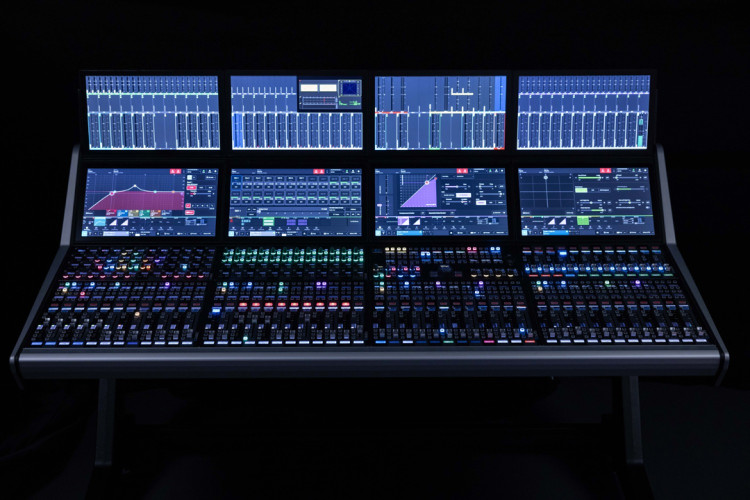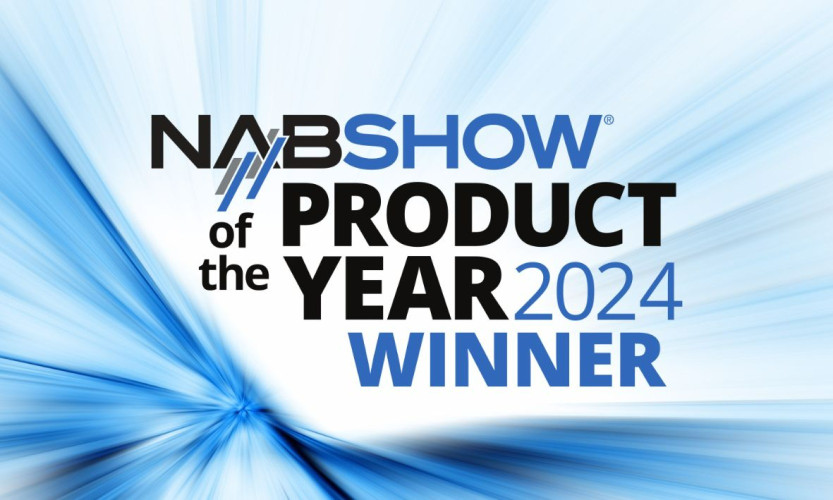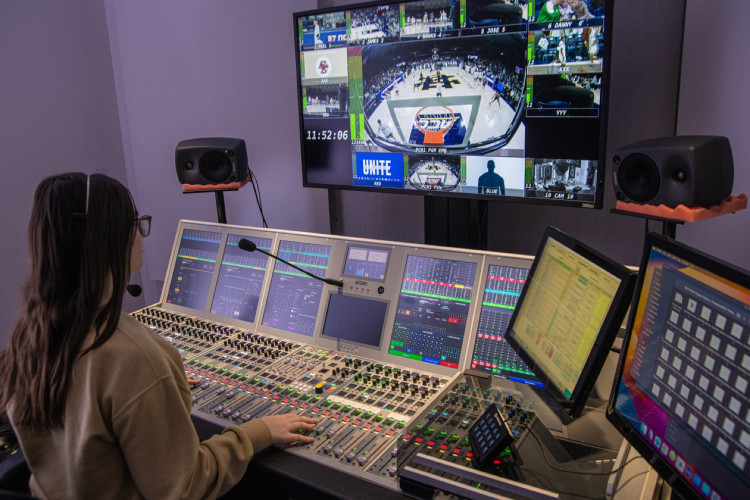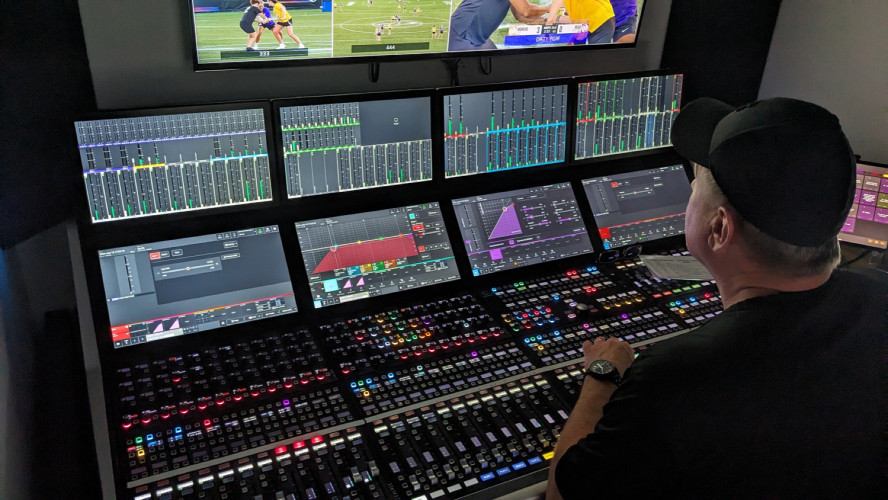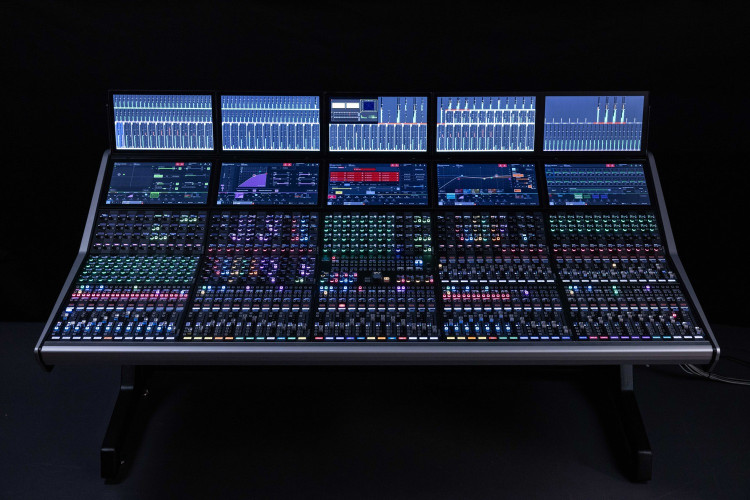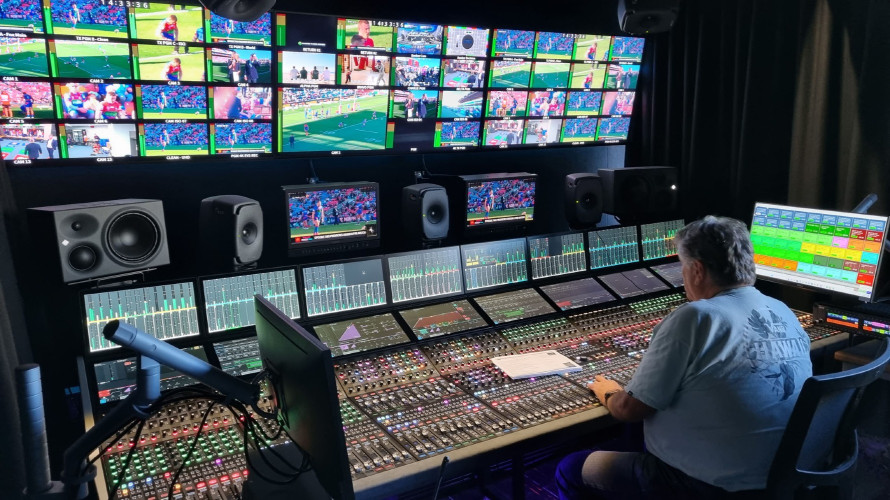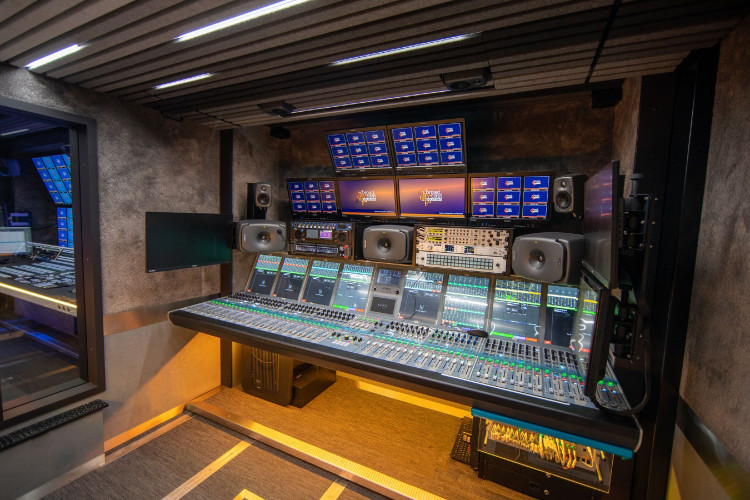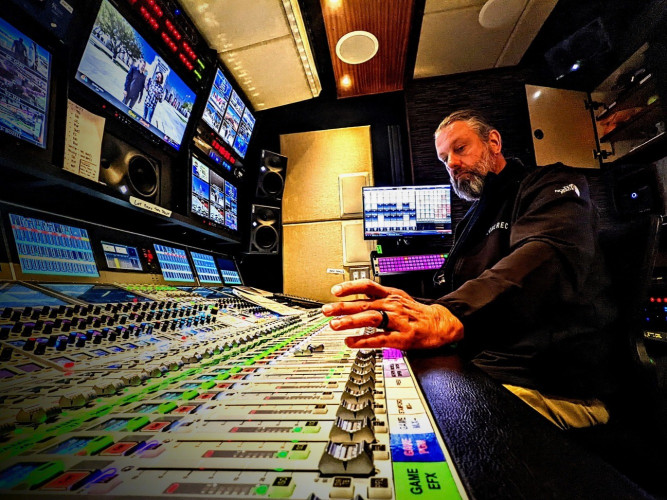Calrec’s award-winning Argo audio mixing control platform, which won NAB 2023 Product of the Year, will be highlighted at this year’s NAB.
Show Debut
On show for the first time will be the new, reduced height variant of Argo-S, our versatile and scalable IP-native mixer control surface. This variant combines the meter-bridge and touch UI into a single row of displays, with users able to switch between Calrec Assist full Web UI and full meters on any section, on-the-fly. It maintains Argo’s everything-from-everywhere ethos of flexibility, customization, ergonomics, resilience, and multi-user workflows in a form factor that will fit in the tightest of environments, or as a drop-in replacement for smaller consoles. It’s also suitable for applications where low-profile is required or where space is limited. Like its larger Argo siblings, each 12-fader wide section is fully independent in terms of processing capabilities, path control access, power supplies and connectivity, meaning there is no reliance on any individual section.
Designed to adapt to changing production needs, Calrec’s Argo Q and the Argo S model represent a new approach to audio mixing, with a flexible control philosophy that breaks the traditional geographic tie lines between processing and control.
Argo is fully modular with interchangeable hardware panels and uses Calrec’s time-served Assist UI at its core. This means that whether you are working on physical hardware panels or on a remote GUI, the user interface is both familiar and easy to drive. Its modular panel system encourages broadcasters to adapt surface hardware to meet their unique requirements, with two mid-level rows of interchangeable panels on the larger Argo Q model, and one, mid-level row on the Argo S model.
Argo’s architecture offers unparalleled system resilience, the surface protected from a single point of failure with each self-contained, 12-fader section benefitting from a redundant power supply and dedicated processor. This system flexibility also means these self-contained sections can be connected together using either local or wide area networks, ideal for distributed productions. As an example, a customer can have a 48-fader main console in London and a 12-fader FX surface in New York connected to a core in Paris, allowing them to work in whatever way they wish.
Calrec has also introduced a comprehensive system of user templates to instantly change the hardware user interface to meet changing requirements or user preferences. Argo’s physical control surface is also more streamlined, using optically bonded touchscreens to provide unrivalled visual feedback and speed of access. Soft panels provide a richer user experience and hardware panels allow users to build definable functions and apply these as templates - this helps operators move around the surface faster and makes it more intuitive. Argo’s panels are also interchangeable and can be placed wherever they are needed. This makes it easy to grow and adapt the console to individual requirements and it means the desk can easily be split for sub mixing or mixing in other locations.
Also being featured at NAB this year is Calrec’s ImPulse1 IP audio processing and routing engine — a smaller, yet powerful, cost-effective ST2110 version of the industry-established ImPulse. ImPulse1 is a compact 1U solution, with an optional second core for redundancy, and a new 128 input channel DSP pack offering entry-level pricing.
With the introduction of ImPulse1, Calrec has made the move to IP much more attainable for all its customers, offering a range of options to suit all budget requirements. ImPulse1 works with Argo Q and Argo S control surfaces, and/or Calrec Assist, a browser-based GUI, ideally suited to remote working, multi operator and/or headless operation. Cores with smaller DSP licenses can be offered without hardware redundancy. ImPulse1 is designed for small to medium single mixer applications and is offered with an all-new DSP license of 128 input channels without compromising its ST2110 capability. With a small overall form-factor, it’s immediately attractive for compact installation sites, such as outside broadcast and fly pack applications, where space is at a premium. Furthermore, it doesn’t compromise on features and DSP power; it has DSP options ranging from 128 to 384 input channels and benefits from the DSP features from the larger ImPulse core.
Calrec’s Type R modular, expandable IP mixing system will also be demonstrated at the show. It’s designed to allow customers to take advantage of distributed production and flexible workflows. Its three hardware and soft panels can create a variety of system types. It ties in with Calrec’s Assist for mixing in the cloud and integrates with station automation systems like Ross Overdrive, Sony ELC and Grass Valley Ignite.



